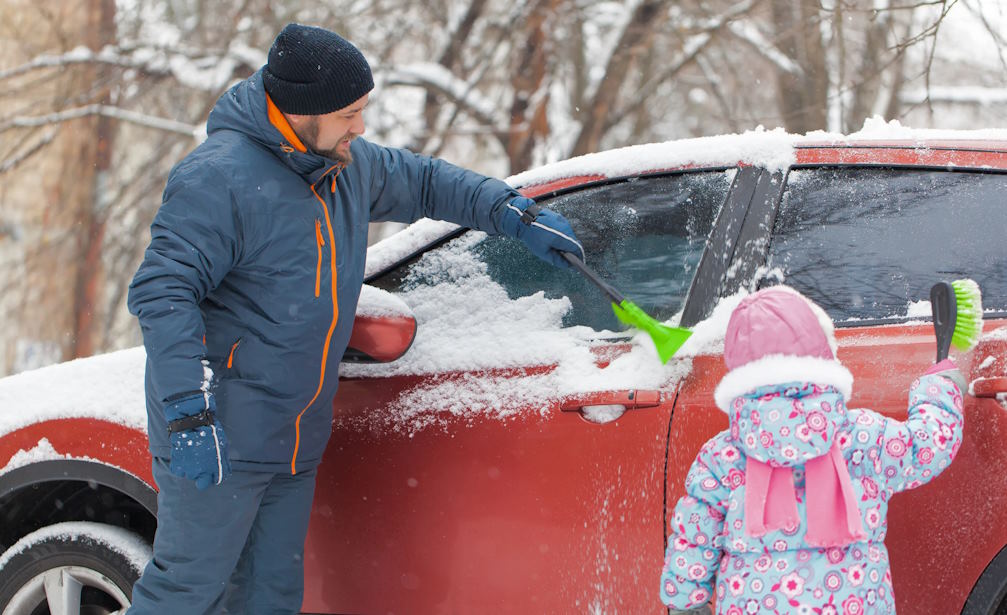Winter’s arrival can be magical, but it also brings with it a host of challenges for drivers. Snow-covered roads, icy patches, and freezing temperatures can turn your daily commute into a treacherous adventure if your car isn’t adequately prepared. However, with some foresight and a bit of maintenance, you can transform your vehicle into a winter-ready powerhouse that effortlessly tackles the elements. Join us on a journey through the steps necessary to protect your car and yourself from the frigid grasp of winter. Whether you’re a seasoned winter driver or a newcomer to snowy roads, these winterizing tips will help you conquer the cold and keep your car running smoothly all season long.
Why Winterizing Your Car Matters
Safety Concerns in Winter Driving Conditions:
When winter arrives, driving conditions can become hazardous. Snow and ice on the roads reduce traction, increasing the risk of accidents. Reduced visibility due to snowfall and fog adds to the danger. Winterizing your car is not just a matter of convenience; it’s a vital safety precaution. Properly maintained tires with adequate tread and appropriate winter tires can significantly improve your vehicle’s grip on slippery surfaces. Well-functioning heating and defrosting systems ensure your visibility remains optimal, reducing the chances of accidents. Your car’s brakes must be in top shape to provide reliable stopping power on icy roads. Neglecting these safety aspects can put you and your passengers at risk.

Potential Damage to Your Vehicle if Not Prepared:
Winter weather doesn’t just pose a threat to your safety; it can also harm your vehicle. Cold temperatures can cause your battery to lose power, leaving you stranded. Unprotected or poorly maintained exteriors can suffer from corrosion due to salt and chemicals used on icy roads. The freezing temperature can affect your engine’s performance if you haven’t checked and maintained essential fluids like antifreeze and oil. Ignoring these factors can lead to costly repairs and leave your car in a sorry state by the time spring arrives.
The Cost-Effectiveness of Preventive Measures:
Investing in winterizing your car is a cost-effective approach in the long run. Preventive maintenance, such as checking your tires, battery, and fluids, is far more affordable than paying for emergency roadside assistance or costly repairs resulting from neglect. Moreover, a well-maintained car is more fuel-efficient, saving you money on gas during the winter months. By addressing these issues before winter strikes, you can avoid unnecessary expenses and enjoy peace of mind knowing your car is ready to face the challenges of the season.
Winterizing Checklist
Inspecting and Maintaining Your Tires
- Tire Pressure and Tread Depth: Proper tire pressure is crucial for winter driving. Cold air can cause your tire pressure to drop, affecting traction. Check your vehicle’s manual for the recommended pressure and inflate your tires accordingly. Additionally, inspect your tire tread depth. Tires with insufficient tread won’t grip the road effectively on icy surfaces, increasing the risk of accidents.
- The Importance of Winter or All-Season Tires: If you live in an area with severe winters, consider switching to winter tires. These tires are designed to provide better grip on snow and ice, enhancing your vehicle’s stability. All-season tires are a good alternative, offering improved performance in a range of conditions. Ensure your tires are in good condition and free from damage.
Checking and Replacing Fluids
- Antifreeze and Coolant Levels: Antifreeze, also known as coolant, prevents your engine from freezing in cold temperatures. Check the antifreeze levels and ensure they’re within the recommended range. If needed, add a 50/50 mixture of antifreeze and water.
- Engine Oil and Transmission Fluid: Cold weather can affect the viscosity of your engine oil and transmission fluid. Check your vehicle’s manual for the right oil viscosity for winter and make sure it’s at the appropriate level.
- Windshield Washer Fluid: Visibility is critical in winter, so ensure your windshield washer fluid reservoir is full. Use a winter-rated fluid that won’t freeze in low temperatures.
Battery and Electrical System
- Testing Your Battery’s Health: Cold weather can strain your battery. Have it tested to ensure it can handle the demands of winter. Consider replacing an old or weak battery before it fails in freezing conditions.
- Checking and Cleaning Terminals: Clean any corrosion from your battery terminals to ensure a solid electrical connection. This simple step can prevent starting issues in cold weather.
Heating and Defrosting Systems
- Testing Your Heater and Defroster: Ensure your heater and defroster are working correctly. A functioning heater keeps you warm, while a working defroster maintains visibility.
- Replacing Air Filters: A clean air filter improves heating and airflow. Replace it if it’s dirty or clogged to ensure efficient performance.
Brakes and Brake Fluid
- Inspecting Brake Pads and Rotors: Worn brake pads and rotors reduce stopping power. Have them inspected and replaced if necessary to maintain safe braking in winter conditions.
- Ensuring Proper Brake Fluid Levels: Brake fluid should be at the correct level, and the system should be free of leaks. Properly functioning brakes are essential for winter safety.
Lights and Visibility
- Inspecting and Replacing Bulbs: Ensure all your vehicle’s lights are working, including headlights, taillights, turn signals, and brake lights. Replace any burnt-out bulbs promptly.
- Cleaning Headlights and Taillights: Winter road grime and salt can obscure your lights. Regularly clean your headlights and taillights to maximize visibility.
Wipers and Windshield
- Replacing Wiper Blades: Worn wiper blades can leave streaks and reduce visibility. Replace them if they’re not effectively clearing your windshield.
- Treating Your Windshield for Ice and Snow: Apply a winter-specific windshield treatment to help prevent ice and snow buildup. This can make clearing your windshield easier on frosty mornings.

